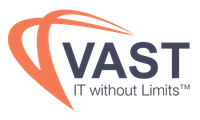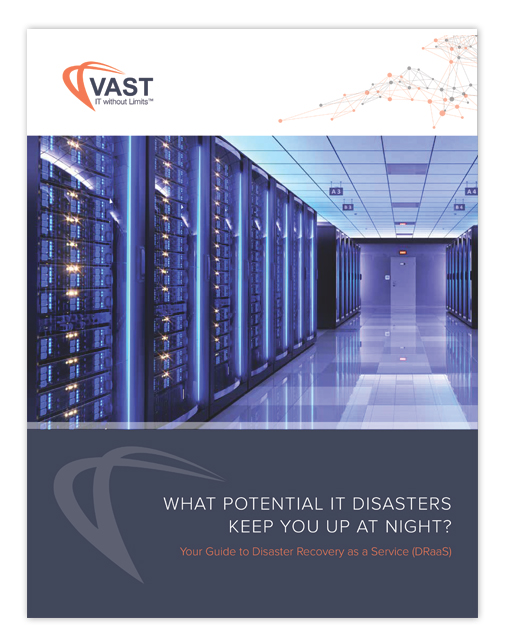Organizations considering migrating IT environments or workloads to the cloud must take preliminary steps to increase the probability of a successful move. Cloud migration is a serious undertaking that has multiple benefits. Companies that approach migration without proper preparation risk minimizing its advantages and can inadvertently harm their business.
One of the most impactful preliminary steps a company can take is to perform a thorough cloud assessment. The results of this evaluation will help determine if the organization is prepared for the transition. The assessment should also identify measures a business can take to ensure a successful migration. Companies are tempting fate when attempting a migration without an in-depth evaluation.
How Cloud Assessment Mitigates Migration Risks
A rigorous cloud assessment addresses many potential migration risks and is essential for a smooth transition. Companies can acquire crucial information by conducting a cloud assessment. They can leverage this knowledge to mitigate specific risks associated with migration.
Determining company readiness
Companies need to evaluate their readiness for the cloud from several diverse perspectives.
- Strategic alignment – Organizations should have a clear business case driving the migration. Company leadership and key business units should endorse the plan. The lack of strategic alignment can result in confusion, missed deadlines, and potentially project failure.
- Technical skills – Companies must determine if they have the necessary in-house skills to support migration and subsequent cloud operations. The assessment should identify skills gaps that organizations can address via training or engaging third-party assistance. Insufficient skills risk inferior team performance during and after the transition.
- Cultural acceptance – Decision-makers must understand the organization’s position on change in general and specifically, cloud technology. All stakeholders should support the migration and be informed of its progress and effects on their role in the company. Resistance to the transition can lead to delays and impact the adoption and optimization of cloud services after the migration.
Infrastructure and application discovery
Companies must understand their existing IT environment before embarking on cloud migration. Organizations interested in migration use the discovery process to identify and categorize the current hardware, software, and services comprising the infrastructure. The goal of discovery is to create an accurate inventory of all IT assets and understand their interactions and dependencies. Discovery is an essential component of the assessment.
Infrastructure discovery provides information on current capacity and performance requirements and how workloads are managed. The process allows teams to identify obsolete or unsupported systems they can modernize during migration. Infrastructure elements discovered include:
- Physical and virtual servers;
- Storage systems and data warehouses;
- Switches, firewalls, and other network components;
- Operating systems and hypervisors.
Application discovery lets teams categorize applications and identify how they interact with the infrastructure. Information gathered during application discovery includes:
- Application names and versions:
- Deployment environment to identify production, test, and development systems;
- Access methods required for application usage;
- License and support position;
- Dependencies on additional services, databases, APIs, or other components;
Dependency mapping compiles the relationships between infrastructure elements. Decision-makers must understand network, system, and application dependencies to prioritize components for migration efficiently. Teams leverage dependency maps to eliminate inoperative integrations, ensure service continuity, and plan phased migrations.
Inventory analysis and workload suitability
Companies must evaluate all workloads and applications under consideration for migration to determine their suitability for the cloud. Teams must look at the following specific characteristics of these workloads.
- Complexity – Workloads with complex architectural requirements may pose difficulties and be unsuitable for migration without remediation.
- Dependencies – IT teams should consult dependency maps to ensure all workloads’ supporting components are included in the migration.
- Performance and resource requirements – Teams must evaluate workloads to ensure the cloud can deliver the necessary performance and resources. The assessment should provide key metrics such as CPU, memory, and storage usage.
Selecting cloud delivery models and providers
Organizations use assessment data to select the right cloud models and providers to support their IT environment.
Companies may need to employ multiple delivery models to address business requirements.
- SaaS (Software-as-a-Service) solutions are often subscription-based applications accessed over the web where the provider manages everything except customer data.
- PaaS (Platform-as-a-Service) provides hardware and software tools where the user manages the applications and data while the provider supports the underlying platform.
- IaaS (Infrastructure-as-a-Service) gives users extensive control over virtualized computing resources. Users manage data, applications, and operating systems, with the provider responsible for the hardware and virtualization.
Business leaders can adopt a hybrid infrastructure and only migrate a portion of the existing environment. A complete migration can involve a single public vendor or a multi-cloud approach leveraging the offerings of several providers.
Identifying security and compliance gaps
Organizations use the assessment to identify and address potential gaps in their cybersecurity posture or regulatory compliance during and after migration. Teams may need to implement new solutions to protect the cloud infrastructure. Specific factors to evaluate include:
- Data security during migration and in cloud storage;
- Backup and recovery strategies for the cloud environment;
- Access controls to limit the use of cloud resources;
- Migrating to compliant cloud platforms for regulated data.
Companies must take the necessary actions to eliminate gaps that risk data loss, breaches, or regulatory non-compliance.
Cost analysis
Assessments typically include an analysis of Return on Investment (ROI) and Total Cost of Ownership (TCO). Business leaders can compare cloud and on-premises costs to make informed migration decisions. The analysis lets organizations make long-term financial predictions and understand the actual costs of migration.
VAST’s Discovery and Assessment Service
VAST offers a comprehensive discovery and assessment service to ensure your company’s successful cloud migration. Service deliverables include:
- Inventory analysis to cloud-fit your target inventory to appropriate solutions;
- Performance and usage metrics for right-sizing the cloud environment;
- Network dependencies to ensure a smooth transition;
- Identifying cloud-ready applications and suggesting delivery models;
- Identify applications requiring remediation before migration;
- Financial analysis, including cloud TCO.
Our migration support extends beyond the assessment. Our experts can help your company develop and implement a phased migration plan that addresses your unique business requirements.
Contact VAST and let our experienced teams help plan and implement your cloud migration to modernize your business and improve its competitiveness.



